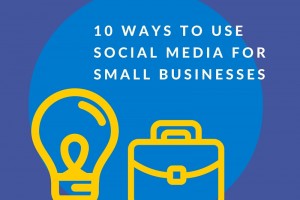The growth hacking is a methodology that comes from the world of start-ups and can help us achieve better results with less effort and less budget. Sounds good right?
When launching a branded mobile app , getting the initial momentum to reach a critical mass of downloads can be tricky. The app market is very competitive, and if you are not at the top of the app stores, sometimes it seems that you are invisible. To turn the tables and get your app to start growing, don’t miss these growth hacking tips!
Table of Contents
What is growth hacking?
The growth hacking is a set of techniques and tools that seek to generate rapid user growth, income or impacts for a company, all with minimal expense and effort possible.
This concept has gained strength in recent years with the popularization of start-ups. Being companies founded with very little budget, they usually cannot do conventional online marketing . But at the same time, they operate in a hyper-competitive environment in which growing fast is essential to attract the interest of potential investors.
All this leads to the search for “tricks” or “hacks” to grow fast with few resources, pulling on ingenuity and looking for new ways of seeing the market. Of course, it must be borne in mind that growth hacking is not a magic solution and for it to work, it must be part of a process in 5 phases:
- Find the fit between the product and the market . The best promotion strategy is useless if the product is not interesting. Therefore, the first step must always be to invest in the product so that it corresponds to what the user needs.
- Find a relationship between functionality and marketing . The idea is to integrate the use of the product itself with the strategy we are using to promote it.
- Grow and go viral . You have to find some kind of incentive or “excuse” so that the product circulates by word of mouth and the users themselves are in charge of promoting it. A very appropriate example is that of Dropbox, which offers free storage space for bringing friends (it is also an example of the relationship between functionality and marketing).
- Build loyalty and improve the offer . Once we have a first wave of users, it is time to stop and think of strategies that will win them long term. This is especially important in the case of apps, since the abandonment rate is very high (who does not have a phone full of applications that they no longer use?).
- Analyze the results and repeat the process . In this sense, growth hacking is like marketing: never rest on your laurels. We always have to keep questioning things, analyze the results and do everything possible to stay ahead of the competition.
10 mobile growth hacking techniques to increase your app downloads
1) Prepare before you start
Growth hacking can be a very effective promotional strategy, but it is not magic. If our application does not have the expected quality or cannot connect with the target audience, we will not be able to achieve long-term results.
Therefore, before launching your growth hacking strategy, you have to make sure that you know the market very well and do product tests with users similar to your target audience .
In the same way, you also need to have clearly defined the objectives and key results that you hope to achieve with your campaign.
2) Start before pitching
A very common mistake in mobile growth hacking (and in marketing in general!) Is not to start promoting until the app is launched. But to be able to launch an effective launch, you need to already have a fan base and a web and social media presence.
Schedule your launch several months in advance , launch your website and your profiles on social networks and create expectations to generate leads and followers. For example, you can promise that users of your newsletter will be the first to know about all the news about the product.
3) Use coupons
The coupons are one of those marketing strategies “lifelong” never stop working. In the case of apps, coupons are usually in the form of a discount code. We can use them in different ways:
- To encourage the user to start using the application , offering a discount on the first order made through it.
- So that the user can obtain an application that is normally paid for free, or make an in-application purchase.
- To encourage the user to make repeated visits to the application : “Thank you for downloading our app! Here is a discount coupon for your next visit.”
4) Cross-promote
The cross – promotions are a way to join forces with credible brands that are in contact with your market and can help provide valuable services to your customers. In the end, it is a win-win arrangement where both parties can access each other’s customer base and improve their own offering.
We have a very relevant example of collaboration between applications with the cross promotion of the Starwood Preferred Guest hotel loyalty program and the Uber application, which can offer transfers to hotel customers.
5) Get viralization through recommendations
Users are often suspicious of brand messages, but are much more willing to accept recommendations from family and friends . Therefore, one of the simplest and most effective growth hacking strategies is to stimulate recommendations.
One of the most successful applications with its recommendation strategy is Airbnb, which managed to increase sales by 300% thanks to them. The secret is that its recommendation system is very easy to use and also very lucrative for users, since the person making the recommendation gets a $ 20 credit for their next reservation and the person who registers in the application, $ 40.
6) do constant testing
One of the salient characteristics of growth hacking is the ability to implement quickly, stick with what works, and discard what doesn’t. And part of it is being willing to test different things in the application using A / B tests .
For example, if you are wondering if it is better to force users to register directly in the application or allow them to link their Facebook account, stop thinking about it: create both versions and compare the results.
7) Optimize your presence in the app stores
The ASO ( “app store optimization”) is one of the most effective techniques to increase the visibility and downloads apps.
ASO is the equivalent of SEO on web pages, but in this case we only have to optimize one element: the app’s listing in app stores. This makes it a much simpler process than optimizing an entire website and therefore you can get results much faster.
As in SEO, in ASO we have elements “on page” (name of the application, description, keywords, screenshots …) and “off page” (number of downloads of the app, social indicators, inbound links …).
8) Look for micro influencers
Campaigns with “classic” influencers , with hundreds of thousands of followers, are very expensive and out of reach for apps looking to grow with growth hacking. But that doesn’t mean they should give up influencer marketing.
Instead, to get downloads of a new mobile app, we can turn to micro-influencers . These users have a much smaller audience than the big influencers, but in return they are highly specialized in a niche and have great recommendation power. With their help, you will be able to get the necessary boost so that your application begins to go viral.
9) think long term
The mobile growth hacking is an excellent tool to give the “initial push” a new application, but the process has just begun.
For your application to have good long-term results, you must not forget that the quality of the users is as important as the quantity. Sometimes growth hacking falls for close-to-spam tactics to inflate the numbers, but those users quit quickly and can’t generate long-term profits. So always try to think ahead.
10) Take care of customer service
Customer service is the ” hidden growth hack ” that few remember, but that is essential for the growth of your mobile app.
Since finding a new customer costs several times more than maintaining an existing one, investing in customer service from the first minute is always worth it. Also, satisfied customers are much more likely to generate recommendations.














